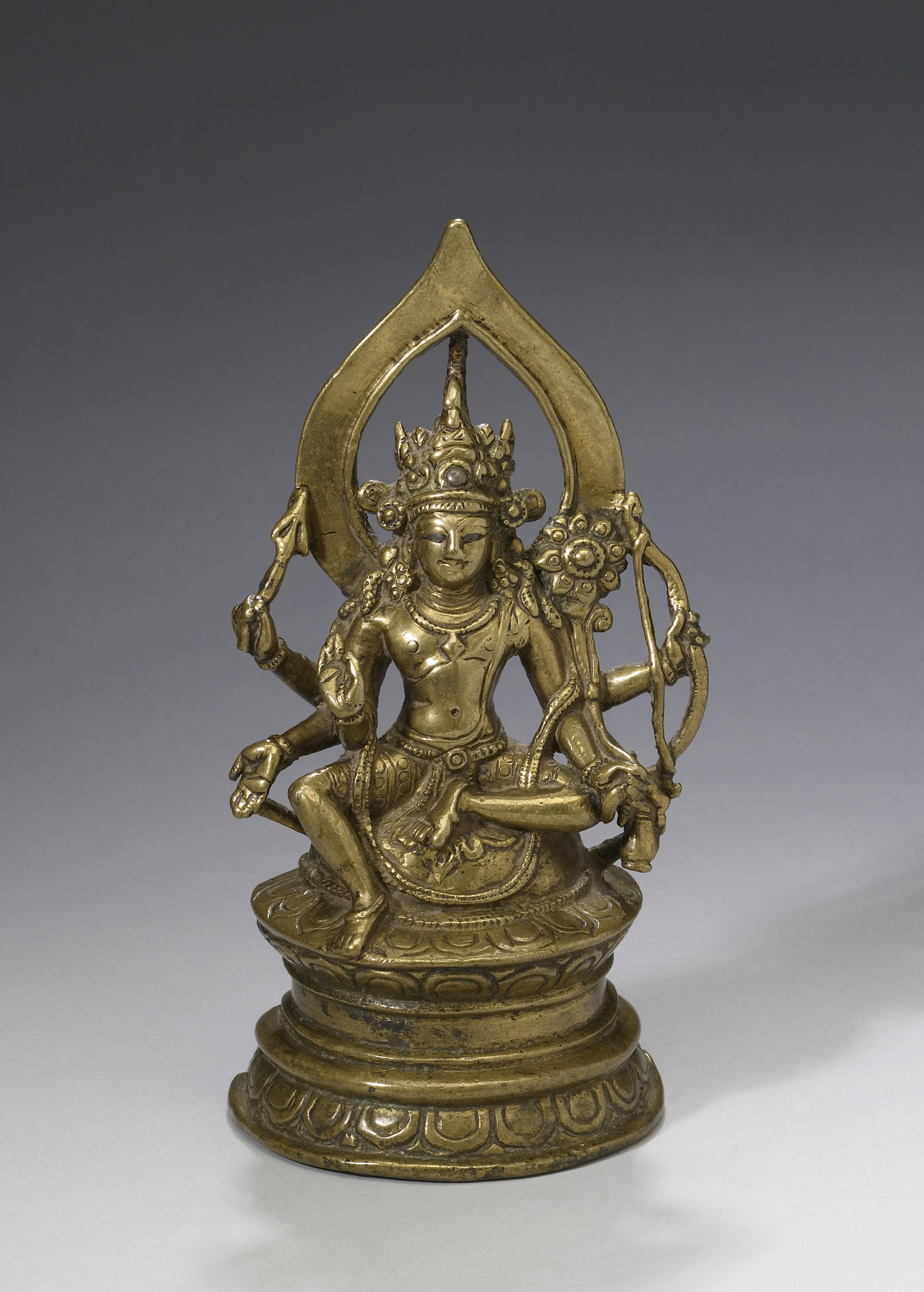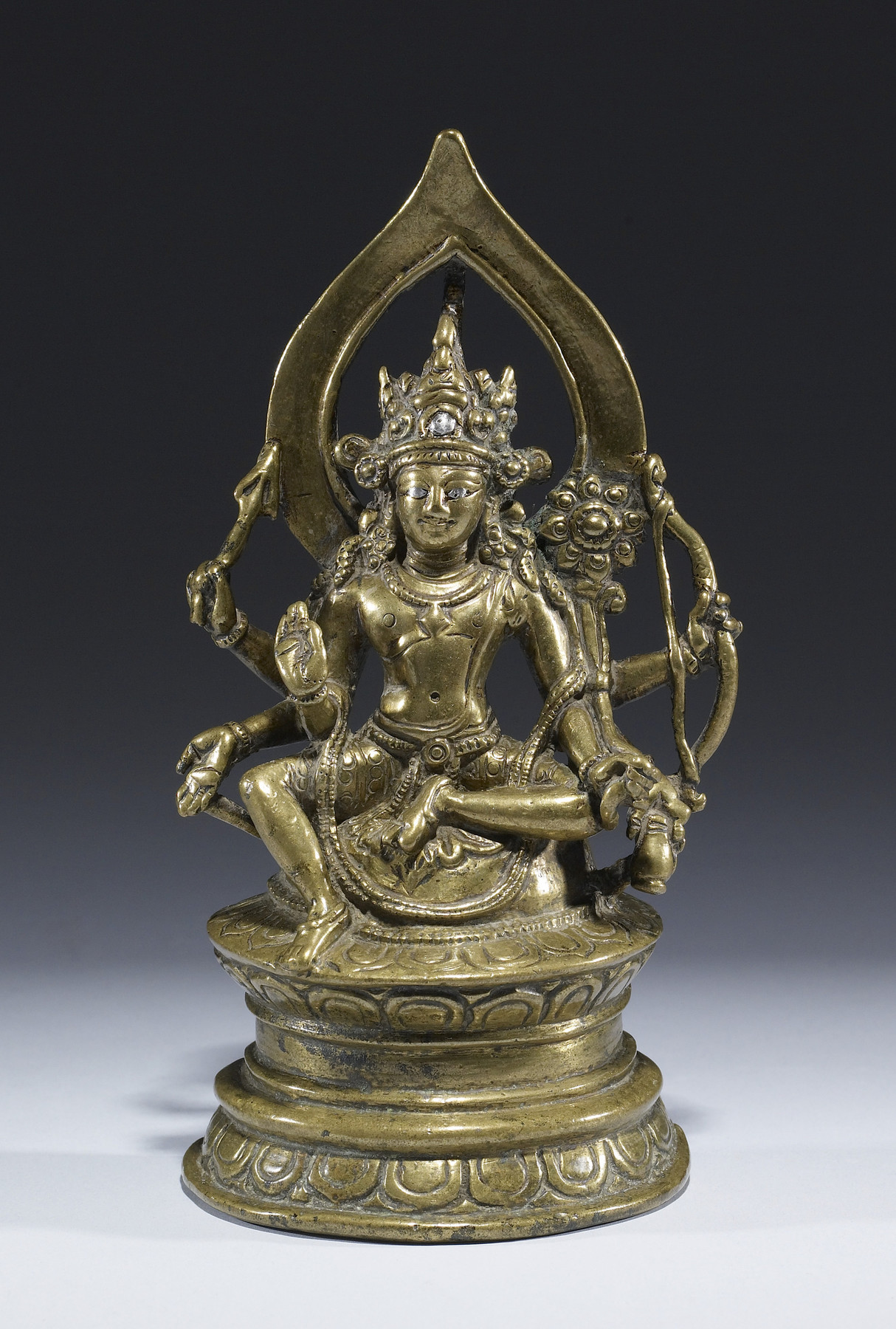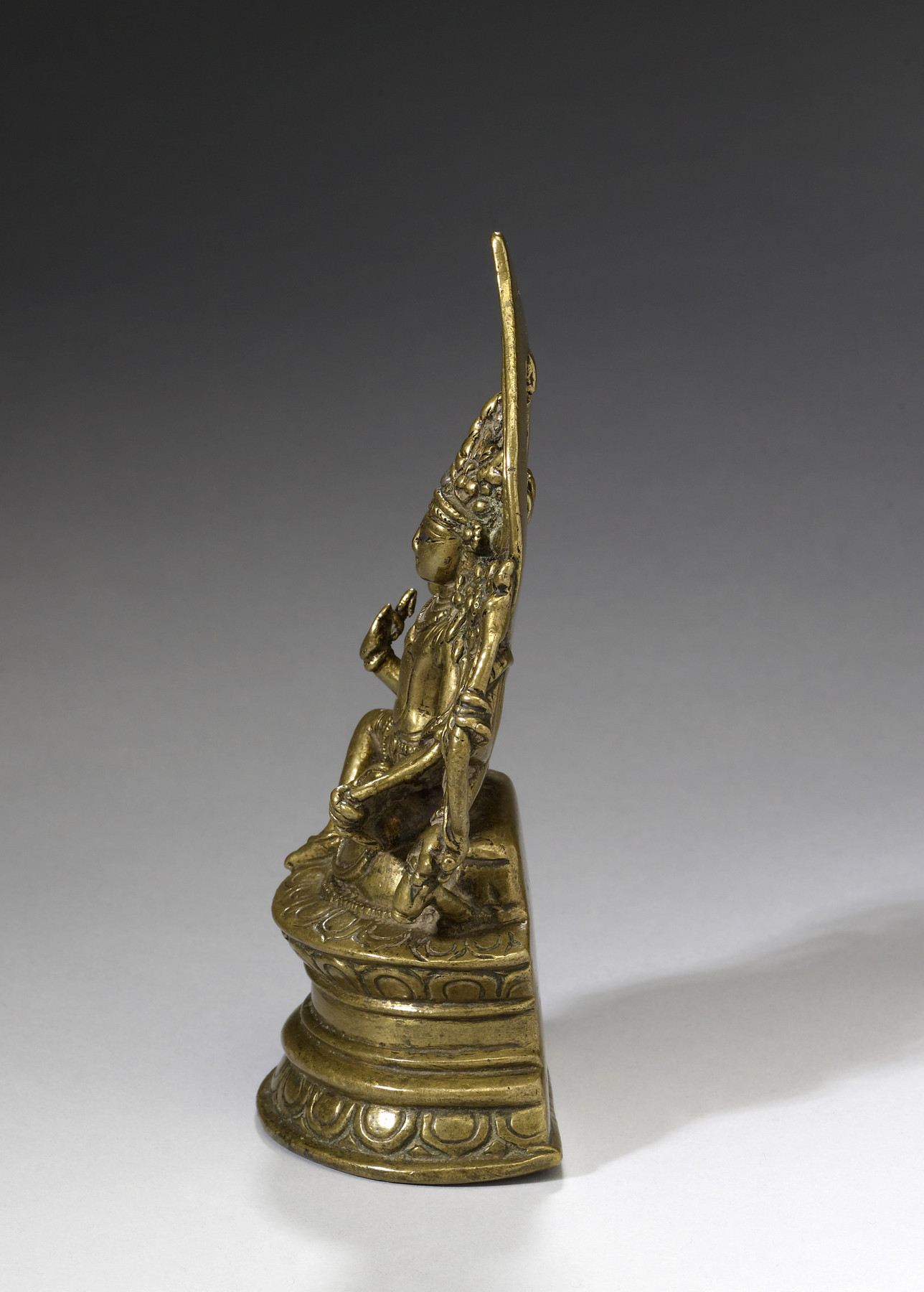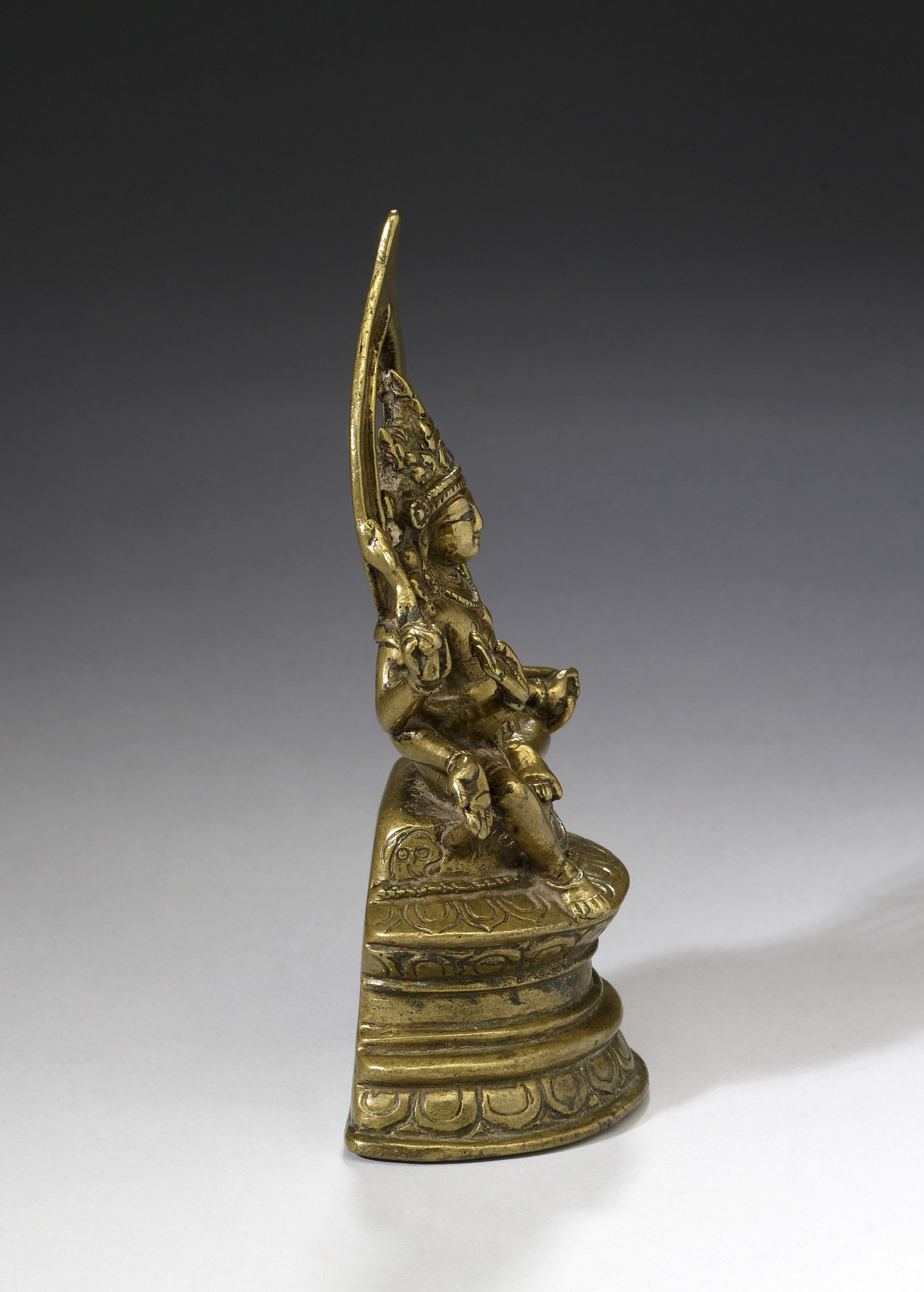Bodhisattva
(India, Nepal, and Tibet)
Kashmir had its own Buddhist traditions, which spread into the Himalayan regions. This six-armed bodhisattva, carrying a bow and arrow, might be a form of Avalokiteshvara.
Provenance
Provenance (from the French provenir, 'to come from/forth') is the chronology of the ownership, custody, or location of a historical object. Learn more about provenance at the Walters.
Bharany Gallery, New Delhi, India [date and mode of acquisition unknown]; John and Berthe Ford, Baltimore, August 1974, by purchase; Walters Art Museum, 2006, by gift.
Exhibitions
| 2001-2003 | Desire and Devotion: Art from India, Nepal, and Tibet in the John and Berthe Ford Collection. The Walters Art Museum, Baltimore; Santa Barbara Museum of Art, Santa Barbara; Albuquerque Museum, Albuquerque; Birmingham Museum of Art, Birmingham; Hong Kong Museum of Art, Hong Kong. |
Conservation
| Date | Description | Narrative |
|---|---|---|
| 6/27/2017 | Examination | Cleaned for exhibition. |
| 6/27/2017 | Examination | The inlaid silver eyes and gem in the crown were tarnished. The silver was polished using precipitated chalk in distilled water. The silver was coated with a protective lacquer to reduce tarnishing in the future. |
Geographies
India, Jammu and Kashmir
(Place of Origin)
India, Himachal Pradesh (Place of Origin)
Measurements
H: 6 1/2 × W: 3 9/16 × D: 2 3/16 in. (16.5 × 9 × 5.5 cm)
Credit Line
Gift of John and Berthe Ford, 2006
Location in Museum
Not on view
Accession Number
In libraries, galleries, museums, and archives, an accession number is a unique identifier assigned to each object in the collection.
In libraries, galleries, museums, and archives, an accession number is a unique identifier assigned to each object in the collection.
54.3026
















